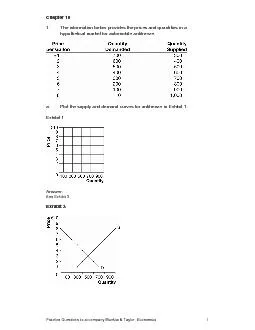PPT-A Presentation to Accompany the Case Study:
Author : tatiana-dople | Published Date : 2019-11-23
A Presentation to Accompany the Case Study NATIONAL CENTER FOR CASE STUDY TEACHING IN SCIENCE Do Grasshoppers Sweat by John G Cogan Emily Hill and Henry D Prange
Presentation Embed Code
Download Presentation
Download Presentation The PPT/PDF document "A Presentation to Accompany the Case Stu..." is the property of its rightful owner. Permission is granted to download and print the materials on this website for personal, non-commercial use only, and to display it on your personal computer provided you do not modify the materials and that you retain all copyright notices contained in the materials. By downloading content from our website, you accept the terms of this agreement.
A Presentation to Accompany the Case Study:: Transcript
Download Rules Of Document
"A Presentation to Accompany the Case Study:"The content belongs to its owner. You may download and print it for personal use, without modification, and keep all copyright notices. By downloading, you agree to these terms.
Related Documents














